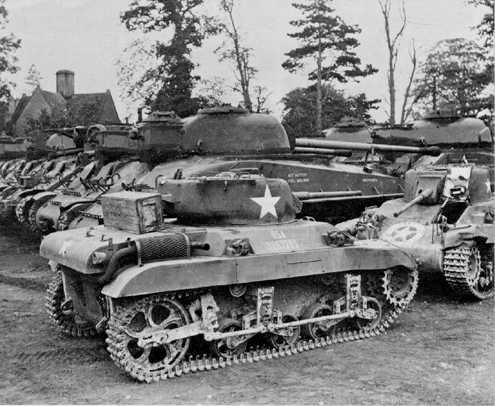The US Firefly: Yeah, I said US Firefly. They Made Some, But None Saw Combat, And They Were Unique And Not Like The British.

Before the Normandy landings, the British had offered the US up to 200 guns a month, if they were interested in the 17-pounder gun. Their rearmament program was well underway and would have enough Firefly tanks ready to go by D-Day. The US was not interested for a variety of reasons. The 76mm M1A1 and M3 90mm gun programs were well underway. Vehicles that used the guns were in the pipeline, even if there wasn’t much demand from the field yet. They did not want to complicate the supply situation with another tank ammo type.
Another reason was the 17-pounder did not impress the US officers who witnessed the test. It had both a large muzzle flash and breach flashback that hinted to them of a poor design. The efforts to convince the Americans of the errors of their ways went dormant along with the program. It wasn’t until the Ardennes offensive, when the US faced some heavier German armor, and in larger numbers than thought possible, that the program came back to life.
Conversions of 75mm armed US Sherman took place starting in March of 45. The US conversions were different in a few ways. The armored box on the rear of the turret was a little bigger to fit US radios, and the M2 machine gun brackets were welded to the end of the radio box. The tanks chosen for the conversions were all M4s and M4A3. It’s possible some large hatch final production Shermans with all the improvements were a part of the 88 that were converted before the program was suspended.
No one has identified what happened to the tanks, and it seems none survived. None were ever issued to US units. It’s one of those little mysteries lost to the archives and time.
Sources: Armored Thunderbolt by Zaloga
Some errors to correct. The US ordered 100 Fireflies. Work began before March 1945.
M4s, M4 Composites, M4A3 (Ford), M4A3 75W and M4A3 75W HVSS were diverted to the program. 88 were delivered from British workshops between Feb and May 1945. None were issued to combat units given the impending defeat of the German army.
My son is writing a paper and is looking for a (the?) US Army report on the mounting and trials of the 17pdr in the Sherman. Anyone have any idea where he might find anything like that? Thanks!
Michael
I like what you guys are up too. Such smart work and reporting! Keep up the superb works guys I’ve incorporated you guys to my blogroll. I think it’ll improve the value of my website :).
You may find Catalogue Reference:WO/229/83, U.K. national archives interesting. It is big but covers the logistics and tanks up to overlord and during the advance into Germany. It is a big file, but worth going through, around page 900, July 2 1944, Eisenhower finds out the M10 76mm, they had left the Sherman’s in the U.K., could not penetrate the front armour of a panther. Not a happy bunny, and takes it up with ordnance who provide results so it should. He then runs his own test with captured armour, to find only the British 17 pounder and 6 pounder APDS would penetrate. He then writes to Marshall demanding better ammunition and the 90mm. Montgomery memo cover offering the Firefly. The US Armour had to wait for the M36, Pershing and better 76mm ammunition. Firefly not perfect, but got the job done, instead of waiting until the perfect solution was ready, Centurion which arrived a year later, Firefly was make do and mend.
From the image I have concluded that the Sherman directly behind the M22 is a M4 Composite (large hatch) with the E9 widened VVSS suspension (not the E8 HVSS) with low-bustle turret and no cheek armour.
“Conversions of 75mm armed US Sherman took place starting in March of 45” – the same month the remanufature of older Shermans with the E9.
http://the.shadock.free.fr/sherman_minutia/e9suspension/e9suspension.html
the armor staff was so foolish. how many american lives lost due to under gun weapons. ease of supply but at such cost of life. push the 90mm gun.
Ken: The Sherman needed a bigger gun to fight Tigers and Panthers.
The US Army saw the Tiger in North Africa and concluded that they would only rarely be encountered. They were completely correct about that.
So that leaves the Panther.
The US Army (and the British) first faced Panthers early in 1944 at Anzio. Prior to that no western unit had ever seen a Panther. The US Army concluded (wrongly this time) that the Panther was another heavy tank that they would only rarely encounter.
By mid-1944, however, almost half the German tanks were Panthers and the US was not prepared to deal with them. *That’s* when the demand for better guns started.
Unfortunately, with a tiny number of exceptions such as Gen Devers, most US leaders had no clue they were going to need a better gun until they started seeing all those Panthers in France in 1944.
How so?